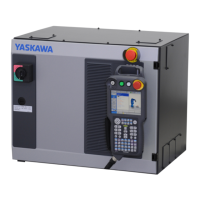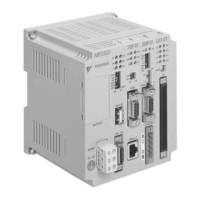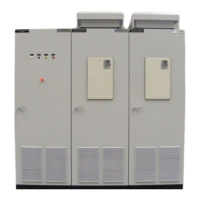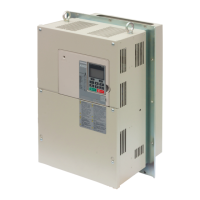MD7 MD61MD5
MD4 MD3
MD2
MD1
MDO
128 64 32 16 8 4 2 1
Value of each bit when the decode output
is to be held
(Exampje of setting)
{M~~ . . .
Set MD1 output
M . . .
Reset MD1 output
{;$$ :::
Set MD4 output
Reset MD4 output
JM67 . . .
Set MD7
OUtpUt
\M77 ... Reset MD7 outpUt
When the decode output is to be kept upon
reset, set the parameters as follows.
#6644 00006100
#6645 67000064
M code setting for setting
#6646 00007100
#6647 77000074
M code setting for resetting
The value of each bit corresponding to MD4
and MD7 are added to #6135,
16 + 128 = 144
144 is set in #6135.
#1224 is 1001000 upon reset.
2.7.8.3 Notes
(1)
Do not set the following hl codes when setting
.
.
the original M code.
MOO, MO1, M02, M30
When these M codes are set, the original M
code functions are lost;
the high–speed M code
has the priority.
M90 to M99
When these M codes are set, the M code
functions have the priority.
Check that the above-M codes are not found
when setting the M code.
(2) If an other process is waiting to be completed
in the same block, it waits for the first
process to be completed.
(3) Do not command two or more
M codes in the
same block.
* If executed, alarm occurs.
2.7.8.4 Example of High-speed M Function
Processing
The following are simple examples of the
high-speed M functions.
(1) Sets the parameter (for setting, resetting).
#6644
#6645
#6646
#6647
(2) 01;
M60;
M61;
M62;
M63;
M64;
M65;
M67;
M30;
(3) 02;
M70;
M71;
M72;
M73;
M74;
M75;
M76 ;
h177;
M30:
63 62 61 60
M
code setting for
67 66 65 64 setting
73 72 71 70
M code setting for
77 76 75 74
resetting
The left program is executed.
The bits corresponding to #1224 DO to
D7 are set.
M60 to M67 do not wait for FIN.
If an M code is to be held, set the total
of each bit corresponding to #6135.
The value to be held is set in #1224 at
the end of the program.
The left program is executed.
The bits corresponding to #1224 DO to
D7 are reset.
The M codes M70 to M71 do not wait for
FIN .
2.8 preparatory Functions (G-FuNcTlON)
2.8.1 LIST OF GCODES
Address G, plus up to 3 digits specify the mean-
ing of the block. Table 2. 8.1 gives G codes and
their groups.
(1) G codes are broadly classified into the
following two types.
Meaning
Modal G-ccdeeffestive until the other
G-code G-cede of the same group is commanded.
Non-modal G-code effective only in the commanded
G-code
block.
(2) G codes in groups from 01 through 11 are
modal.
When the control is energized with
the power switch,
the G codes marked with
➤ in Table 2.8. 1 are automatically selected.
23
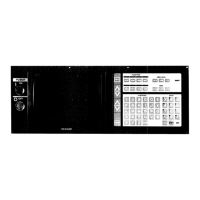
